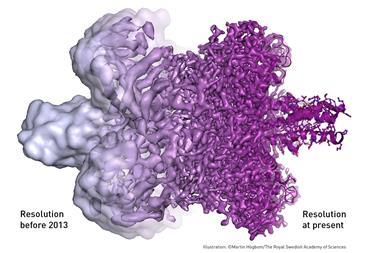A new project aims to lower the energy requirements for cryo-electron microscopy studies and make the technique more accessible for UK researchers.
Cryo-EM produces atomic scale images of biological samples, and has become a crucial technique for medical scientists. But the specialist instruments required are in high demand – the UK’s national cryo-EM facility currently has a six week waiting list.
Researchers from the Rosalind Franklin Institute will collaborate on the project with Richard Henderson and Chris Russo from the MRC’s Laboratory of Molecular Biology (LMB). Henderson was a joint-recipient of the 2017 chemistry Nobel prize for his pioneering work on cryo-EM, while Russo’s group has recently built a prototype low-energy microscope.
The project will develop a new detector that will enable higher resolution data to be gathered using the lower energy 100keV microscopes than is currently produced with industry standard 300keV instruments. It is hoped that producing better data with these lower energy instruments will make cryo-EM studies more practical for greater numbers of researchers.
The LMB’s director Jan Löwe commented that making cryo-EM more accessible will enable researchers ‘to understand biological mechanisms and diseases, and to develop drugs more easily, even when the most complex and currently intractable molecules are involved’.
The project has received funding from UK Research and Innovation and the Engineering and Physical Sciences Research Council.

















No comments yet